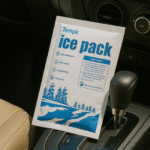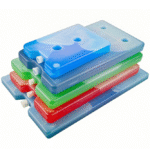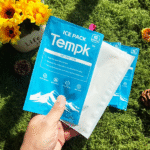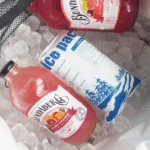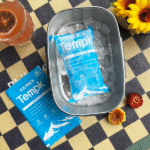TroyicePackface: Ist es sicher für Ihre Haut?
Ich hoffe a TroyicePack Face Routine kann Poren verkleinern oder die Rötung nach der Peel ruhig werden? Stopp - Solidco₂ trifft –78 ° C., weitaus kälter als die Haut tolerieren kann. Dieser Leitfaden erklärt die Risiken, bietet Dermatologen -Rückschläge, und zeigt, wie man kontrollierte Kalttherapie ohne Erfrierungen nutzt.
-
Warum ist Trockeneis zu extrem für den Gesichtsgebrauch?
-
Welcher Temperaturbereich ist hautsicher für Kryo -Schönheit?
-
Welche 2025 Kühlgele und Masken erzielen zu Hause Ergebnisse zu Ergebnissen zu Ergebnissen?
-
Wie gehen Sie sicher mit Trockeneis um, wenn der Transport es erfordert?
-
Welche gemeinsamen Mythen zirkulieren noch in den sozialen Medien - und warum Sie sie ignorieren sollten?
Warum ist Trockeneis für Gesichtsbehandlungen gefährlich?
Trockner liegt bei –78 ° C.; Direkter Kontakt kann Hautzellen innerhalb von Sekunden einfrieren, Erfrierer und dauerhafte Pigmentierungsverlust verursachen. Auch durch ein Tuch, Exposition unter 10 Sekunden -Risiken oberflächliche Verbrennungen. Hautsichere Kryobehandlungen bleiben zwischen –10 ° C und 10 ° C - fast 70 ° C wärmer als Trockeneis.
A 2024 Dermatologische Umfrage berichtete über einen Anstieg der Gefrierschrankfälle im Zusammenhang mit DIY -Gesichtsbehandlungen.
Wärmeschädenschwellen (°C)
| Temperatur | Sichere Belichtungszeit | Was passiert mit der Haut? |
|---|---|---|
| +10 bis –10 | 1–3min | Vasokonstriktion, Rötung verblasst |
| –20 | 10–30s | Nervenstifte & Nadeln,Risiko für Kapillaren |
| –78 (Trocknung) | < 5s | Eiskristalle, Zelluläre Nekrose |
Hautsichere Alternativen für eine kühlende Gesichtsbehandlung
-
Phase -Change -Gelmasken (–5 ° C Sollwert)
In 30 Minuten in Gefrierschrank aufladen; Liefern Sie Spa -Calm ohne Biss. -
Edelstahlkryo -Globes (Vorschreibe bis 0 ° C.)
Rollen Sie nach dem Training über Wangen zum Depuff. -
Hydrogel -Augenflecken mit Menthol
Geben Sie bei hautneutralen Temperaturen ein kaltes Gefühl.
ECHTERWEISSHIN: Ein Ästhetiker tauschte Trockenartike -Demos gegen Phasenmasken aus und schnitt Kundenreizvorfälle von 12% auf 0% ab.
Umgang mit Trockeneis sicher während des Produkttransports
-
Tragen Sie isolierte Handschuhe; Erfrierungen in < 5s nackter Kontakt.
-
Entlüftungskühler (20–30 mm²) Co₂gas freisetzen.
-
Halten Sie das gesamte Trockeneis ≤ 2,5 kg, wenn fliegen.
-
Lassen Sie restliche Eis im Freien sublimieren; Niemals versinken.
Obwohl Trockeneis für die temperaturempfindlichen Versandsseren von entscheidender Bedeutung ist, es sollte niemals Berühren Sie das Gesicht selbst.
Mythos -Busting -Ecke
| Social Media -Behauptung | Realitätsprüfung |
|---|---|
| "Trockeneis schrumpft die Poren sofort." | Temporäre Vasokonstriktion bei –78 ° C zerstört auch Hautzellen. |
| "Eine Handtuchbarriere macht es sicher." | Sogar zwei Baumwollschichten übertragen in Sekunden. |
| "Promis benutzen es vor roten Teppichen." | Professionelle Kryo -Gesichtsbehandlungen verwenden –5 ° C -Geräte, nicht Trockeneis. |
2025 Trends in der Gesichtskryotherapie
-
Pflanzliche PCM -Masken auf Pflanzen Das gilt –8 ° C für 20 Minuten und dann warm bis 5 ° C..
-
NFC -geschlagene Walzen Verfolgen Sie die genauen Hautkontakttemperaturen für die Einhaltung von Med -Spa -Einstellungen.
-
Recycelbare Bio -Gel -Packungen Liefern Sie präzise 0 ° C -Kühlung und Recycling am Straßenrand.
Marktanalysten prognostizieren a 12 % CAGR Für sichere Kryo -Tiefen -Geräte durch 2028 Wenn sich die Verbraucher von riskanten DIY -Hacks zu regulierten Technologien wechseln.
FAQ
Ist jede Menge Trockeneis auf der Haut sicher?
NEIN. Auch ein kurzer Kontakt kann Erfrierungen verursachen; Halten Sie sich an –10 ° C bis 10 ° C -Geräte.
Kann ich Trockeneis in ein dickes Handtuch für einen schnellen Depuff einwickeln??
Immer noch gefährlich - Kold sickert schnell durch und Sie können die Exposition nicht genau beurteilen.
Was ist schnell, sichere Lösung für geschwollene Augen?
Kühlen Sie einen rostfreien Kryo -Globus oder Löffel auf 0 ° C.; Beantragen Sie 30 Sekunden lang pro Bereich.
Zusammenfassung & Empfehlungen
Mit a Trocknungspack im Gesicht ist ein Rezept für Erfrierungen. Entscheiden Sie sich für Phasenmasken, Kryo -Globes, oder Mentholgele, die über –10 ° C bleiben. Reserve Trockeneis für den Versand - keine Hautpflege.
Nächste Schritte:
-
Werfen Sie einen Online.
-
Investieren Sie in eine zertifizierte Kryomaske mit einem PCM -Kern von –5 ° C.
-
Folgen Sie unserer freien Temperatur -sicheren Routine für das tägliche Glühen.
Übertempk
Wir konstruieren temperaturgesteuerte Verpackungs- und Wellnesskühlausrüstung. Unsere Bio -Cool -Masken verwenden pflanzliches Gel -Gel, kalt auf –5 ° C., und sind vollständig recycelbar am Straßenrand.
Benötigen Produktempfehlungen? Buchen Sie eine kostenlose Beratung.

















